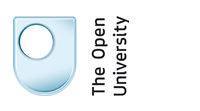

| : | THE MUSIC COMPUTING LAB |
People
Projects
Publications
Non-Print
PhD Places
Virtual MPhil
Visitors/Interns
News & Events
Jobs
Meetings
Resources
Site Map
Contact
Software
Video
Audio
SOFTWARE, AUDIO, VIDEO & PERFORMANCE
Software
1 Tuio for Squeak
Tuio for Squeak enables tangible user interaction based on video tracking of physical objects.This package offers an implementation of the Tuio protocol, a Tuio client and Tuio demonstration programs to work with the reacTIVision computer vision system for tracking physical objects in real time. Tuio for Squeak allows the construction of tangible user interfaces using fiducial markers on physical objects. This allows the rapid development of table-based tangible user interfaces (TUI) and multi-touch interactive surfaces. By Simon Holland.
2 Open Sound Control for Squeak (version 5.5.1)
OSC (Open Sound Control), here implemented for Squeak, is a vital component in many music computing and pervasive interaction systems.Open Sound Control for Squeak version 5.5. includes enhancements, fixes & new unit tests to support bundles, intensive input & the Tuio protocol for Reactivision, and new unit tests.
This software now forms part of the tool kit underpinning research prototypes and demos for the OU Pervasive Interaction Research Group. Revised version by Simon Holland. Original versions by Markus Galli. (4028 downloads as of Jan 2010)
3 AspectMusic
This project devised, and now continues to refine and investigate, ways in which Aspect Oriented Programming (AOP) and Multi-Dimensional Separation of Concerns (MDSOC) approaches can be applied to the organization of musical materials for the purposes of music composition and musical analysis. AspectMusic source code by Pat Hill, co-supervised by Simon Holland and Robin Laney.4 Hex
A Dynamic Tonality MIDI sequencer—it uses a rotating lattice to make the MIDI sequencing of microtonal music as straightforward as it is for 12-tone equal temperament (a sort of SONAR/Cubase/Logic for microtonalists). By Andrew Milne and Anthony Prechtl.5 2032
A Dynamic Tonality physical modelling synthesizer—uses modal synthesis to model string and pipe sounds. The underlying note tuning can be changed (dynamically), and the partials of each tone can be tuned to match the underlying tuning. By Andrew Milne and Anthony Prechtl.6 Relayer
Relayer enables musicians who play the AXiS-49, the QWERTY computer keyboard, or the Thummer, to play in a wide variety of isomorphic note layouts and tunings (even with a standard multitimbral synth). By Andrew Milne.7. PitchMetrics
A package of MATLAB routines to calculate the pitch domain distance between pitch collections (such as chords, melodies, scales, tunings, virtual pitches, or spectral pitches). Some of these routines were used to generate the figures and data in Milne, A. J., Sethares, W. A., Laney, R., & Sharp, D. B. (2011). Modelling the similarity of pitch collections with expectation tensors. Journal of Mathematics and Music, 5(1), 1–20. By Andrew Milne and William Sethares.Video
E-sense video on iTunes U. This features various prototypes from the Music Computing Lab, including the Haptic Drum Kit and Music Jacket.The Haptic Bracelets, designed at built at the Music Computing Lab - short video demonstrating some musical and medical applications.
The Stern Brocot Band plays Rocket Socks.
(The Stern Brocot Band is the microtonal/funk former house band of the Music Computing Lab.)
Rocket Socks - early version
Rocket Socks - studio session
Video of the The Stern Brocot Band at QMU
The Stern Brocot Band (Andy Milne, Simon Holland, Vassilis Angelis) at Queen Mary University playing a piece by Andy in 15-tone equal temperament.
Video of the Stern Brocot at the OU
The Stern Brocot Band (Andy Milne, Simon Holland, Vassilis Angelis, Maxime Canelli) playing Yak butter at the Open University.
New videos to post - Whole Body Harmony Space
Audio
BBC Radio 4 Program on Maths and Music, Interview about HarmonySpace.BBC Maths Music.mp3
BBC Radio Scotland News item on Harmony Space.
BBC Radio Scotland HSP.mp3